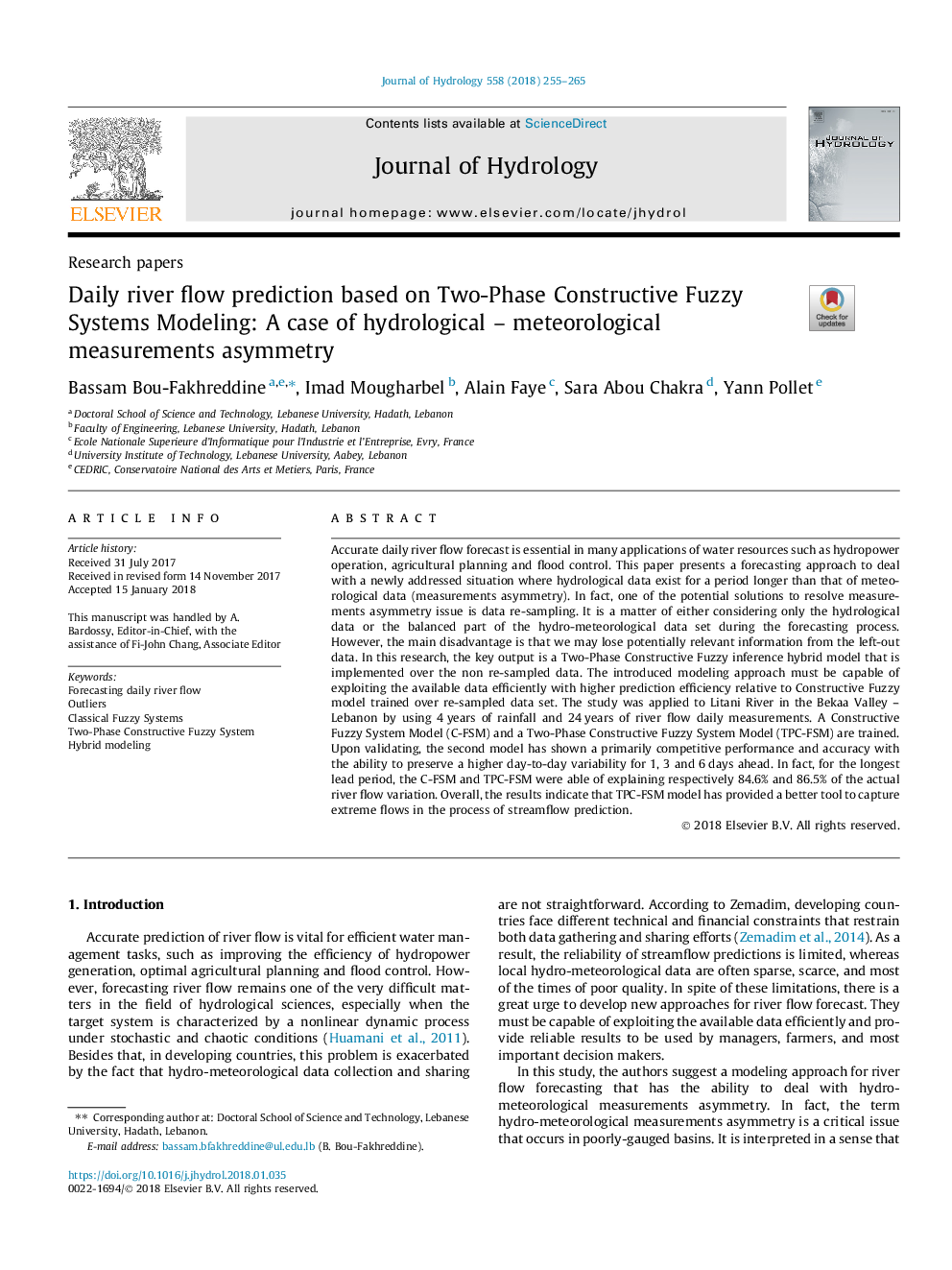| کد مقاله | کد نشریه | سال انتشار | مقاله انگلیسی | نسخه تمام متن |
|---|---|---|---|---|
| 8894995 | 1629896 | 2018 | 11 صفحه PDF | دانلود رایگان |
عنوان انگلیسی مقاله ISI
Daily river flow prediction based on Two-Phase Constructive Fuzzy Systems Modeling: A case of hydrological - meteorological measurements asymmetry
ترجمه فارسی عنوان
پیش بینی جریان روزانه رودخانه براساس مدل سازی فازهای ساختاری دو مرحلهای: یک مورد عدم تقارن اندازه گیری هیدرولوژیکی -
دانلود مقاله + سفارش ترجمه
دانلود مقاله ISI انگلیسی
رایگان برای ایرانیان
کلمات کلیدی
پیش بینی جریان روزانه رودخانه، ناپایدارها، سیستم های فازی کلاسیک، سیستم فازی ساختاری دو مرحلهای، مدل سازی ترکیبی
موضوعات مرتبط
مهندسی و علوم پایه
علوم زمین و سیارات
فرآیندهای سطح زمین
چکیده انگلیسی
Accurate daily river flow forecast is essential in many applications of water resources such as hydropower operation, agricultural planning and flood control. This paper presents a forecasting approach to deal with a newly addressed situation where hydrological data exist for a period longer than that of meteorological data (measurements asymmetry). In fact, one of the potential solutions to resolve measurements asymmetry issue is data re-sampling. It is a matter of either considering only the hydrological data or the balanced part of the hydro-meteorological data set during the forecasting process. However, the main disadvantage is that we may lose potentially relevant information from the left-out data. In this research, the key output is a Two-Phase Constructive Fuzzy inference hybrid model that is implemented over the non re-sampled data. The introduced modeling approach must be capable of exploiting the available data efficiently with higher prediction efficiency relative to Constructive Fuzzy model trained over re-sampled data set. The study was applied to Litani River in the Bekaa Valley - Lebanon by using 4â¯years of rainfall and 24â¯years of river flow daily measurements. A Constructive Fuzzy System Model (C-FSM) and a Two-Phase Constructive Fuzzy System Model (TPC-FSM) are trained. Upon validating, the second model has shown a primarily competitive performance and accuracy with the ability to preserve a higher day-to-day variability for 1, 3 and 6â¯days ahead. In fact, for the longest lead period, the C-FSM and TPC-FSM were able of explaining respectively 84.6% and 86.5% of the actual river flow variation. Overall, the results indicate that TPC-FSM model has provided a better tool to capture extreme flows in the process of streamflow prediction.
ناشر
Database: Elsevier - ScienceDirect (ساینس دایرکت)
Journal: Journal of Hydrology - Volume 558, March 2018, Pages 255-265
Journal: Journal of Hydrology - Volume 558, March 2018, Pages 255-265
نویسندگان
Bassam Bou-Fakhreddine, Imad Mougharbel, Alain Faye, Sara Abou Chakra, Yann Pollet,
